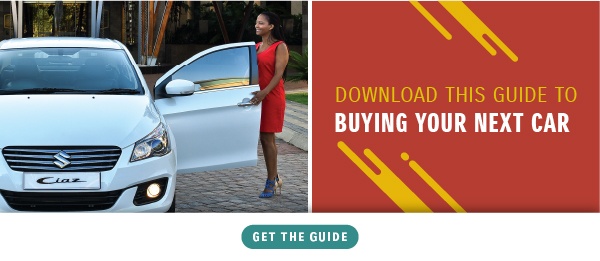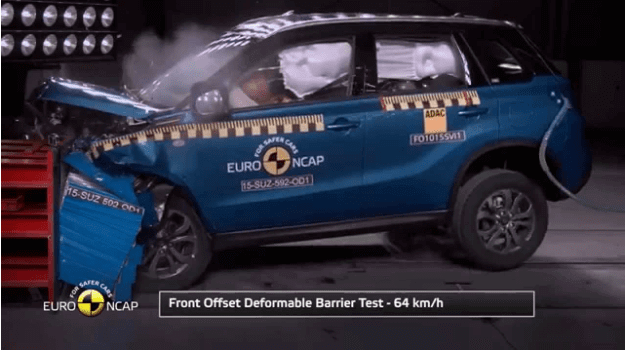Five-star NCAP ratings are probably the most desirable option for a lot of consumers worried about the safety of their vehicles should they ever find themselves in an accident. However, a closer look at the rating system and how stars are awarded shows that safety is nonetheless not out of reach for those of us on a budget.
Purchasing a new vehicle is a big decision that requires the utmost clarity to avoid any hassles that may arise once the purchase has been made. In this regard, there are several things to consider including your budget, lifestyle and, perhaps most importantly, safety.
This is where the new car assessment program (NCAP) comes in. Whether it’s five stars or no stars; these ratings aren’t as straightforward as you might think. Understanding how the stars are awarded is therefore very important as it empowers you to make an informed decision based on reliability, practicality and affordability.
What is the NCAP?
The NCAP is a five-star safety rating system designed to help consumers compare vehicles more easily and to help identify what the safest choice is for you and your needs. It establishes a global safety standard but, while a five-star rating may be ideal, it’s important to weigh this decision against your budget and lifestyle, bearing in mind that a low rating on a vehicle does not necessarily mean the car is unsafe. The ratings are rather a comparison between different models and are largely dependent on the technology installed in each vehicle.
It is also interesting to note that NCAP ratings take place per region, although vehicles are tested (brands) people will need to consider which region the vehicle was built for, as certain car safety standards differ per region.
Subtle Differences
The different NCAPs around the world include Japan NCAP, Euro NCAP, Korean NCAP, China NCAP, Latin NCAP, ASEAN NCAP (serving the Southeast Asia region), the Australian NCAP and Green NCAP operated by the Euro NCAP, for emissions. The Global NCAP is the one most relevant to the South African market as it tests vehicles manufactured according to safety standard requirements for this region, it is also interesting to note that they test vehicles from the manufacturer country, for example; A Swift built for a different country may be tested but our market requires more safety features such as ABS, min of 2 airbags, pretensioner and force limiting seatbelts.
The Euro NCAP, for example, enforces stricter pedestrian protection conditions and rewards stars on a host of automated driving safety features like occupant status monitoring (seat belt reminders), lane-keeping assistance, speed assistance systems warning the driver when they exceed speed limits and other similar features that are not considered important by regulators in markets like India where the most basic protection for passengers is sufficient for a vehicle to score a high safety rating.
Another subtle, but important difference, is the speed at which cars are tested by the different NCAPs. The Global NCAP carries out its crash tests at 64km/h, whereas India’s Bharat New Vehicle Safety Assessment Program uses 56km/h. This means a vehicle could very easily rate higher in the BNVSAP test, while getting a lower rating from the Global NCAP.
American safety regulations require airbags for occupants who are not wearing safety belts, while in Europe, regulations require that everyone wear a safety belt.
These are clear demonstrations of how the rating systems don’t necessarily negate the safety of a vehicle but sometimes go further to idealise features that won’t protect occupants but would rather help drivers avoid accidents altogether, as the case is with Euro NCAP standards
It’s therefore important to know the market relevance of the NCAP rating you are looking at as safety standards - and therefore individual car safety ratings - differ for each market.
Safety ratings are awarded according to driver, passenger and pedestrian safety and divided into four different categories:
1. Adult occupant protection
Dummies representing adults are placed inside the vehicle and put through a variety of tests to determine how safe an adult would be in a head-on collision; a frontal collision at a slight angle; if the vehicle swerves and hits an object; how well the occupants are protected against whiplash and the car’s autonomous emergency braking system to determine if the system can brake the vehicle in time to avoid a collision entirely.
2. Child occupant protection
Dummies representing children up to ten years old are placed inside the vehicle and put through the same tests. Additionally, vehicles are tested for safety by installing various child restraint systems like baby seats and booster cushions.
3. Pedestrian protection
This is a test of damage should the vehicle hit a pedestrian. This also determines what damage is likely done to the upper leg and lower leg area. Another test for braking for pedestrians, similar to ABS braking for other vehicles, is done with real-world scenarios such as someone stepping in front of a vehicle.
4. Safety Assist
These are features that will not protect you in an accident, but help to avoid an accident. They include an electronic stabilising control system, seat belt reminders, speed assistance to warn drivers should they go over a speed limit, (the accuracy of this system determines how well the vehicle scores), automatic brake function, and forward-collision warning.
How stars are awarded
With each category, here is what each star rating means:
- 5 stars – Excellent crash protection; the vehicle is equipped with robust crash avoidance technology
- 4 stars – Overall good performance; crash avoidance technology may be present
- 3 stars – Average crash protection but the vehicle may not be equipped with the latest crash avoidance features like electronic stability control, seat belt reminders and the like
- 2 stars – Minimal crash protection; the vehicle lacks the latest crash avoidance technology
- 1 star – Marginal protection and little to no crash avoidance technology
- 0 stars – Car can legally be sold but lacks critical safety technology
For the average driver with a limited budget, a 3-star rating may be sufficient to give you peace of mind that should an accident occur, you and other occupants are protected despite its lack of the robust latest safety features that may be present in a more expensive vehicle.
Why South African safety standards are different from international standards
Safety should always be one of the first considerations when you are looking for a new vehicle. Safety terminology and the difference between European, American and local safety standards can, however, make this a very complicated field to navigate.
So the question is: why do safety standards differ according to country or region, and what does this mean for someone looking for a safe vehicle in South Africa?
In short: safety standards vary because there is no global governing body that can enforce safety standards around the world. For this reason, every country (and some combined regions such as Europe) list what they believe the standards for vehicle safety should be and then categorise each vehicle according to their standards.
These standards - even if they vary - are excellent for the automotive industry as a whole, because they keep pushing vehicle manufacturers to improve vehicle safety, which is fantastic. Developed (and therefore richer) countries can afford to insist that more expensive safety features should be standard. Again, this pushes the whole motoring industry forward in terms of safety as these ‘new and expensive’ features eventually do become standard (ABS is a good example as it started as a feature that was only included in luxury/sports vehicles and is now a standard safety feature in nearly every new vehicle, no matter the cost).
Don’t defeat the purpose
That said, modern intelligent safety features have created a perceived ‘safety gap’ between expensive vehicles that have all the bells and whistles and more modest vehicles that don’t. That is why countries such as South Africa have safety standards that focus on the most important safety features (the absolute must-haves) and don’t insist that all intelligent safety systems must be included. This would simply make most vehicles unaffordable for many South Africans, who would then turn to old and possibly incredibly unsafe vehicles, which would completely go against the original intention of creating a ‘base’ vehicle safety level in SA.
Understand your safety levels
It is vital for customers in growing economies, such as ours, to know that more affordable vehicles aren’t necessarily unsafe. This article digs into the differences between Active and Passive safety features and also goes on to explain that: “As with most other countries, all vehicles sold in SA for use on public roads are required to conform to a set of national regulations controlled by the National Regulator for Compulsory Specifications (NRCS), which took over the regulatory functions of the SABS in 2008. The compulsory specifications for motor vehicles are generally aligned with European equivalents but are implemented in a time frame deemed appropriate to South African requirements.
These standards cover a broad range of components and systems, many of which are safety-critical such as lights, glass, mirrors, child restraints, seat belts and anchorages, brake systems and frontal-impact characteristics including rearward movement of steering controls in a crash. Before a particular vehicle type may be offered for sale, it is subjected to a homologation (type approval) process which requires the manufacturer or importer to provide the NRCS with evidence of conformance in the form of test reports from accredited testing facilities.”
Download our ultimate guide to road safety to ensure you are keeping yourself and your loved ones safe on the road.
Peace of mind
South African motorists can rest assured that if they buy a vehicle from a reputable brand and dealership, they are buying a safe vehicle. All Suzukis, for example, have world-class crumple zones, pre-tensioning and force limiting seat belts, airbags, ABS brakes and more, which are all the vital safety features needed to keep you as safe as possible on the road.
Safety: vehicle vs public transport
Unfortunately, there isn’t a catch-all answer to this question in SA, as it all depends on individual circumstances. For example, if your vehicle is no longer roadworthy and the tyres are worn and the brakes are not reliable etc, then public transport might be a safer option until you can get your vehicle repaired.
At the same time, we all know that our local public transport services are not known for their safety and many commuters opt for car-pooling rather than relying on unsafe taxis or buses.
It really is a struggle in SA, which is why it’s so important that potential vehicle buyers do their safety research. In most cases it is always better to opt for a safe, affordable vehicle than rely on risky public transport. This is also why many manufacturers insist on keeping their vehicles as safe and affordable as possible: they comply with the necessary safety standards without pushing up the price.
Purchasing a vehicle with a 5-star NCAP rating is ideal, but cars with lower ratings can be the most practical, reliable and infinitely more affordable option.


![Demystifying the safety rating – and what that means for SA [Update]](https://blog.suzukiauto.co.za/hubfs/Demystifying%20the%20safety%20rating/Untitled%20design%20(20)-596718-edited.png)
.png)